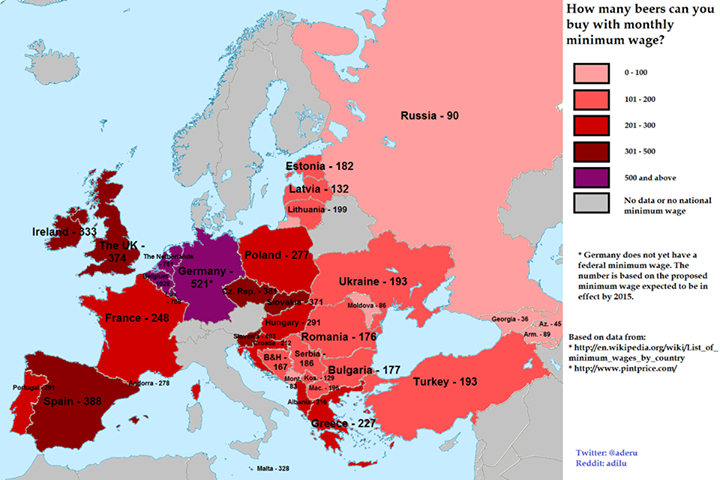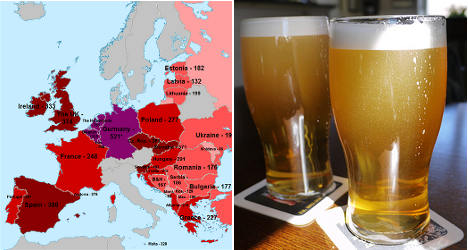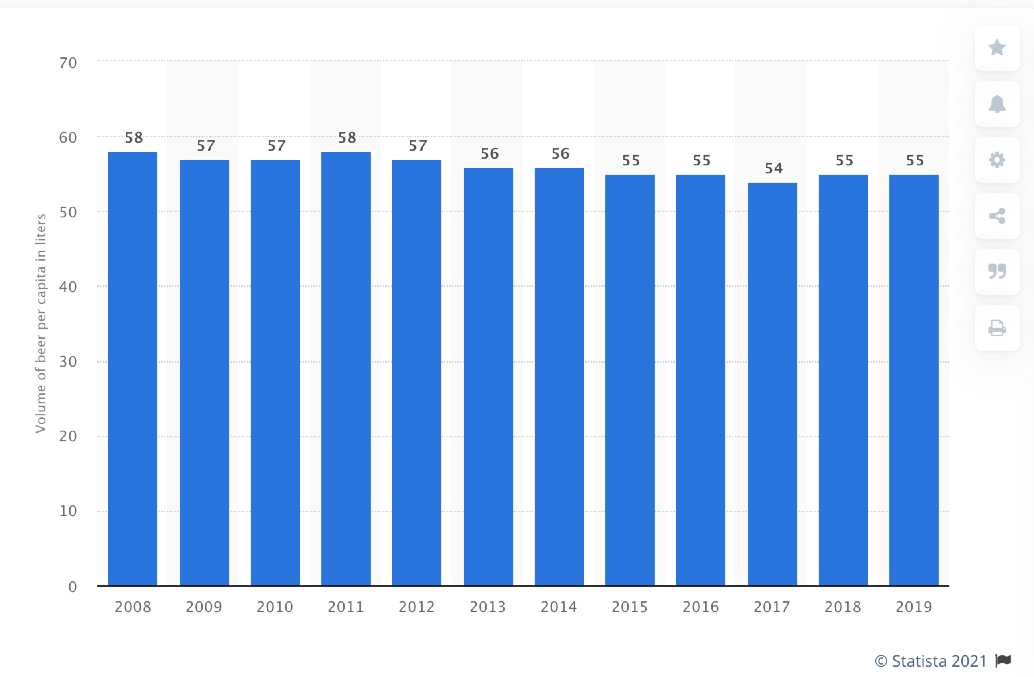The map's creator, who shared his work on social media sites like Facebook and Reddit, used pricepint.com to estimate how many beers can be bought in countries across Europe with their own individual minimum wages.
The Belgians are way in front with 1,028 beers followed by their neighbours Holland, who get 761 with their minimum wages.
After Luxembourg's impressive 708 pints a month, comes Germany in fourth place with 521 beers, based on the proposed minimum wage of €8.50 an hour set to be introduced in 2015.
Czechs and Slovaks also get good value for their ‘pivos’ (beer), with 381 and 371 pints respectively.
In Ireland, a minimum wage of £6.31 per hour can apparently buy you 374 pints a month, while in Britain you’ll be able to gulp down 333 beers for the monthly minimum of €1,461.
Despite the contested accuracy of the map’s figures, it’s certainly struck a chord with beer lovers around the world.
However, Spanish commentators seem predominantly unconvinced by the alleged 388 beers they could get with an official minimum wage is €645.30 ($890) per month.

A debate is raging over whether the map is counting pint glasses or Spain’s traditional “caña” glasses (20 centilitres on average).
Then there are others who call into question what Spain’s ‘real’ minimum wage is and that a pint bought in a pub in big cities like Barcelona or Madrid costs on average €5.
And of course there are those who praise the “caña plus tapa” combination found in bars across Spain but mainly in the southern city of Granada, a deal which includes a plate of food with every beer ordered.
Regardless of whether the map is 100-percent accurate, it’s certainly got Spaniards talking about their preferred drink of choice — beer — contrary to what many outsiders may have assumed.
It seems even enjoying a pint has become part of the ubiquitous topic of discussion that nobody in Spain can escape from: "la crisis".




 Please whitelist us to continue reading.
Please whitelist us to continue reading.
Member comments